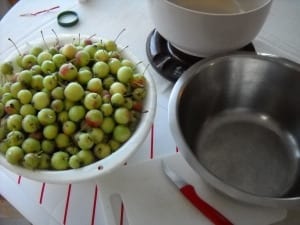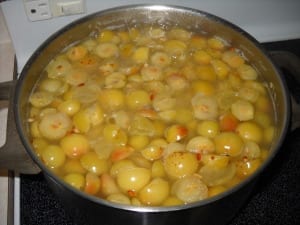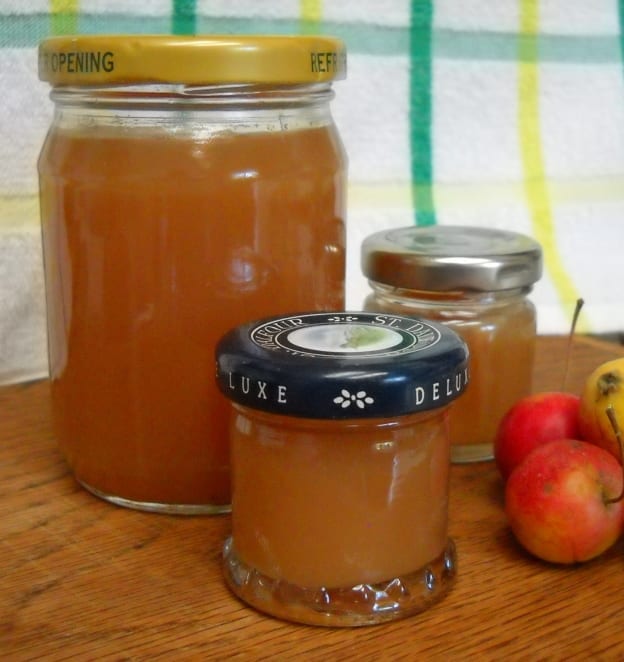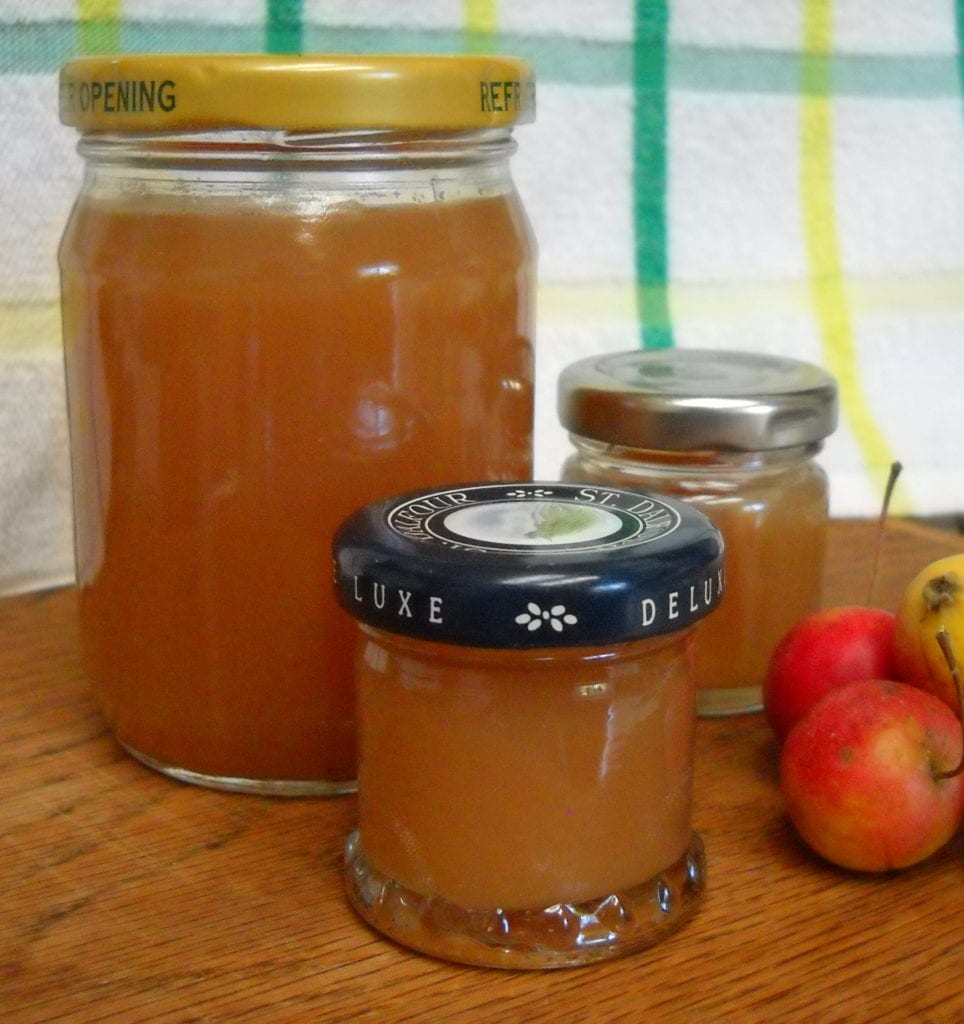 I am one of those people who just likes to know how things are made. It does not mean I want to make everything from scratch but each time I learn something new I either start thinking about what creative trouble I can get myself into or I have lots of gratitude for the fact that I don’t need to spend my time making whatever from scratch.
I am one of those people who just likes to know how things are made. It does not mean I want to make everything from scratch but each time I learn something new I either start thinking about what creative trouble I can get myself into or I have lots of gratitude for the fact that I don’t need to spend my time making whatever from scratch.
A couple of generations ago making pectin for jams and jellies would have been a standard skill for the cook in the family. Not so today. That may be because buying it off the shelf in powdered form is so easy but additionally, how we live has changed and not everyone has a sour apple tree in the back forty.
Pectin is one of those things I have gratitude for but since a friend of mine has a tree full of crab apples and I have a couple of other things on the go in the kitchen, I am going to share with you the process of making homemade pectin.
 The greener the apples are, the higher the pectin content, so my first step was to sort out the apples that had the smallest amount of red on them. The ones that had been in the shade and not getting full sun.
The greener the apples are, the higher the pectin content, so my first step was to sort out the apples that had the smallest amount of red on them. The ones that had been in the shade and not getting full sun.
I washed, plucked the stems and sliced off the blossom tip of the crab apples and weighed out 3 pounds making sure to cut away anything that looked suspect.
Once the three pounds or thereabouts were in a pot I added 4 cups of water and 2 Tbsp lemon juice ( also high in pectin ).
 Place over a medium high heat and let your cauldron bubble uncovered for about 40 minutes. Don’t they look like grapes?
Place over a medium high heat and let your cauldron bubble uncovered for about 40 minutes. Don’t they look like grapes?
One of the reasons to boil for so long is that you want the liquid to evaporate and reduce it’s volume by about half. My apples were cooked in about ten minutes. Hopefully you will be using larger apples and it will take a little longer.
An important piece of information to keep in mind when using the finished product is that time and experience are a great asset in understanding the concentration of the pectin being created so testing when you are at the point of making jam is vital. For a way of checking concentration with rubbing alcohol take a look at how Forager’s Harvest does it. It is important that no one consume the pectin being tested with rubbing alcohol as it is toxic.
 Once you have reduced the volume of liquid by about half, transfer the liquid to a cheesecloth lined sieve or if like me you have a raw linen cloth you use for straining, grab that and line a sieve or collander that is sitting over a bowl. Make sure you have enough space between the bowl and the sieve to allow the mixture to drip freely. Carefully transfer the hot mixture to the colander and allow it to drip well, at least a few hours or overnight. ( If overnight make sure to cover the apple mixture. It is fruit fly season here. )
Once you have reduced the volume of liquid by about half, transfer the liquid to a cheesecloth lined sieve or if like me you have a raw linen cloth you use for straining, grab that and line a sieve or collander that is sitting over a bowl. Make sure you have enough space between the bowl and the sieve to allow the mixture to drip freely. Carefully transfer the hot mixture to the colander and allow it to drip well, at least a few hours or overnight. ( If overnight make sure to cover the apple mixture. It is fruit fly season here. )
After dripping overnight, I had 2 cups which I boiled for another 15-18 minutes and reduced down to about a cup.
When ready, you can
- allow to cool, place in a container and freeze the pectin;
- pour into ice cube trays and freeze, then pack into a freezer bag and label or
- seal in a rubber ringed jar like you would a jam or jelly.
Now the adventure begins and I can’t say this enough…… TEST when making jams and jellies with home made pectin.
Your crop of apples each year will have a varying levels of sweetness and therefore more or less pectin.
The fruit you are making jam from each season will be different, so the only way to know for sure that your product is setting is to test.
Set point for jam is 220 degrees, so having a thermometer clipped to your jam pot will help.
One way to test for set is to place a few saucers in the freezer before starting. Put a teaspoon of jam on the freezer plate and wait one minute. When the time is up, push your finger through the jam. It should wrinkle together and not simply refill the space you have created. If the jam does not wrinkle, return the pot to the heat and give it another five minutes before testing again.
Happy pectin making. You will be ready for next years strawberry crop!
Home made Pectin from My Kitchen Wand



